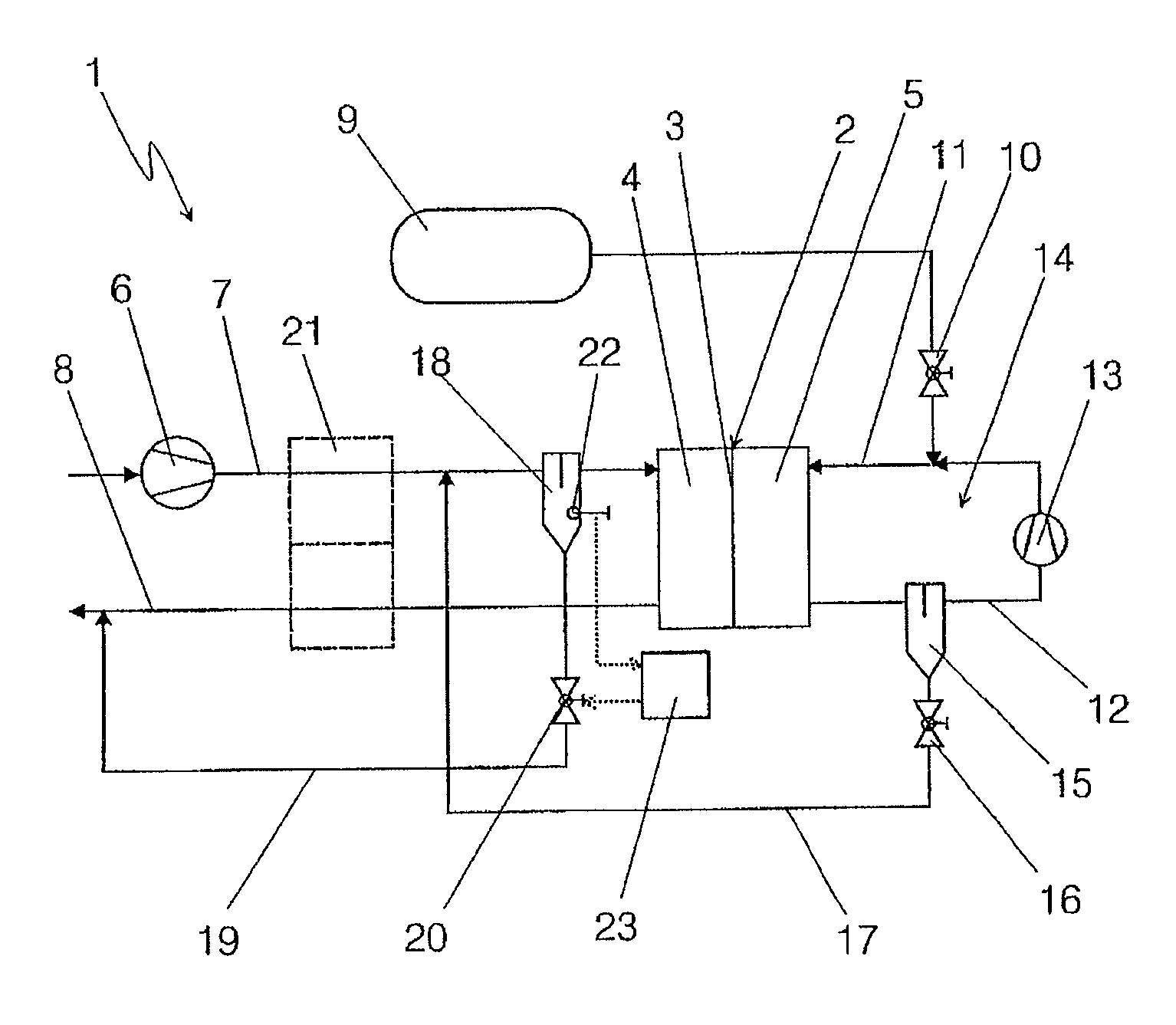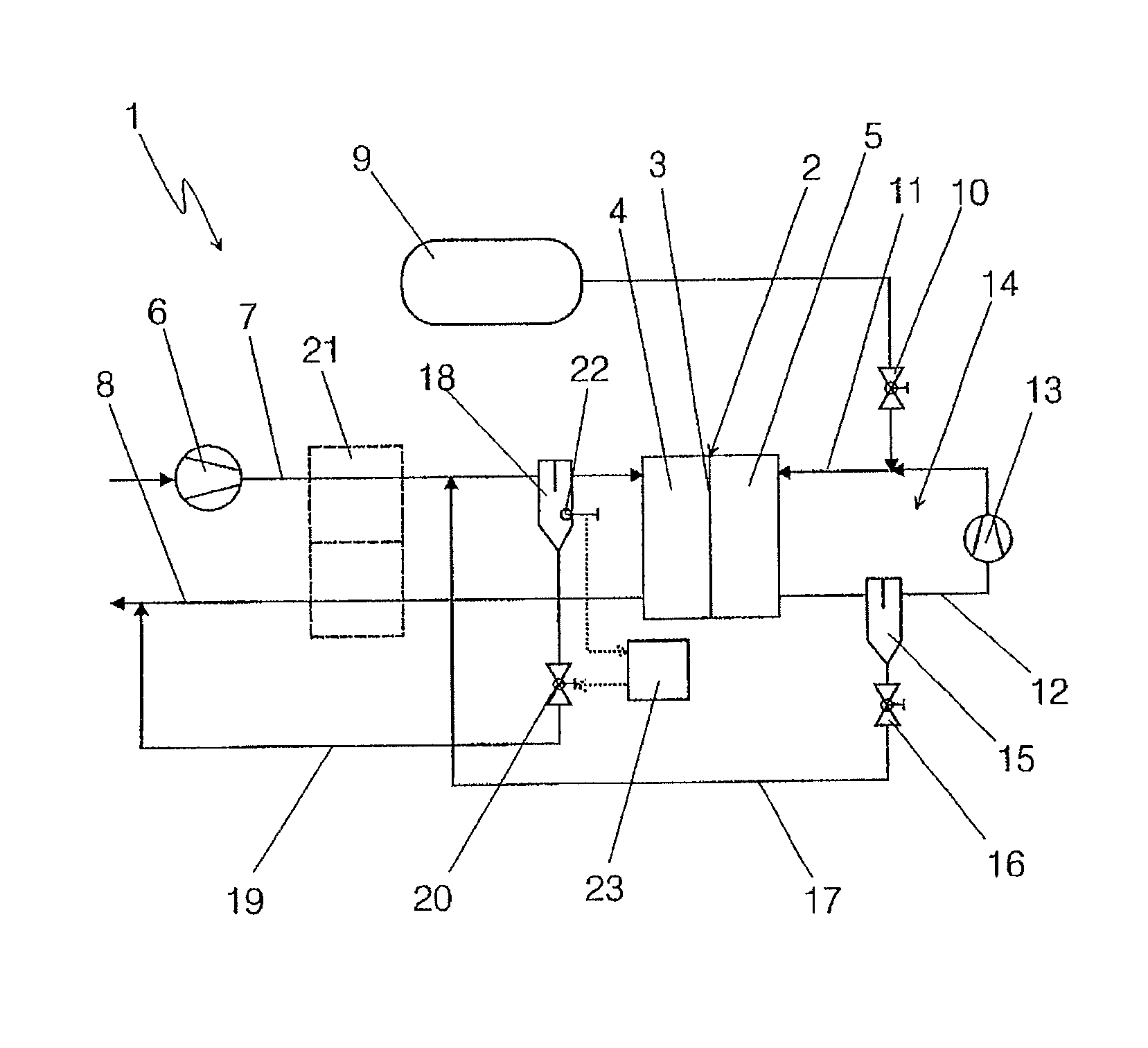Fuel Cell System
- Summary
- Abstract
- Description
- Claims
- Application Information
AI Technical Summary
Benefits of technology
Problems solved by technology
Method used
Image
Examples
Embodiment Construction
[0014]A fuel cell system 1 is to be identified in the FIGURE, which can ideally be used to provide electrical operating energy in a vehicle. It comprises a fuel cell 2, which is constructed, for example, as a sequence of individual cells. Here, the individual cells are preferably embodied with PEM technology and have a membrane 3, which separates a cathode chamber 4 from an anode chamber 5 of the fuel cell 2. Air is conducted into the cathode chamber 4 as oxygen delivery via an air conveyance device 6. This arrives at the region of the cathode chamber 4 via a supply line 7 and flows back via an exhaust line 8 out of the cathode chamber 4, depleted of oxygen. The exhaust air can then enter the atmosphere or, if desired, flow via suitable burners, turbines or suchlike beforehand, as is known in itself from the general prior art.
[0015]Hydrogen is conducted from a compressed gas storage unit 9 to the anode chamber 5 of the fuel cell 2 and arrives at the region of the anode chamber 5 via...
PUM
 Login to View More
Login to View More Abstract
Description
Claims
Application Information
 Login to View More
Login to View More - R&D
- Intellectual Property
- Life Sciences
- Materials
- Tech Scout
- Unparalleled Data Quality
- Higher Quality Content
- 60% Fewer Hallucinations
Browse by: Latest US Patents, China's latest patents, Technical Efficacy Thesaurus, Application Domain, Technology Topic, Popular Technical Reports.
© 2025 PatSnap. All rights reserved.Legal|Privacy policy|Modern Slavery Act Transparency Statement|Sitemap|About US| Contact US: help@patsnap.com


